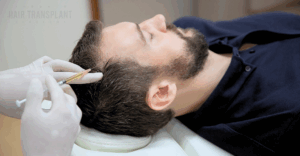Stem Cells For Hair Loss: Therapy Options – Toronto Hair Transplant Surgeons
Self-image has become highly prioritized among society. These cells are able to grow their own hair follicles. Stem cells act as the building blocks for regenerating hair and skin, providing the essential cellular components needed for these processes. The cells produced in vitro form organoids, which fuse together to create polarized cysts—a process that involves significant cell growth. Over time, the polarized cysts collectively create new layers of skin, that grow their own hair follicles on the laboratory mice. Current research findings indicate significant gains in hair density observed in stem cell therapy treatments. These findings are promising for future applications in regenerating human hair follicles.
Introduction to Hair Restoration
Hair restoration has become an increasingly important topic for those experiencing hair loss, as it can deeply affect self-confidence, emotional wellbeing, and overall quality of life. Advances in stem cell research are now offering new hope for individuals seeking effective solutions for hair regrowth. Stem cells have the remarkable ability to target and repair the cells responsible for hair production, making them a promising option for hair restoration. Some studies show a 29 percent increase in hair density after stem cell injections. As scientists continue to explore the potential of stem cell therapy, the future looks brighter for those hoping to restore their hair and regain their sense of self.
Understanding Hair Growth
The process of hair growth is a sophisticated interplay between various cell types, most notably hair follicle stem cells, dermal papilla cells, and other supporting cells within the hair follicle. Hair follicle stem cells are found in a niche called bulge located at the bottom of the hair follicle. Hair grows in a cyclical pattern, moving through three main phases: the anagen (growth) phase, catagen (transitional) phase, and telogen (resting) phase. Disruptions in this hair growth cycle can lead to thinning hair or hair loss. Hair follicle stem cells are essential for hair regeneration, as they help initiate new hair growth and maintain healthy follicles. Factors such as hormonal changes, stress, and genetics can influence the activity of these follicle stem cells, making them a key focus in the development of innovative hair loss treatments.
Types of Stem Cells
Several types of stem cells are being investigated for their potential in hair restoration. Mesenchymal stem cells, which are multipotent and can differentiate into a variety of cell types—including those found in hair follicles—are one promising option. Adipose-derived stem cells, sourced from fat tissue, have shown the ability to enhance hair growth by increasing both hair density and thickness. Liposuction is used to obtain fat cells from which adipose-derived stem cells (ASCs) can be extracted. Perhaps most directly relevant are hair follicle stem cells, which are responsible for the formation and maintenance of hair follicles themselves. Each of these stem cell types offers unique advantages for hair restoration, and ongoing research is helping to determine the most effective approaches for stimulating new hair growth and improving hair density.
Simple Science Behind Hair Loss Treatment.
Are Stem Cells the Cure to Hair Loss?
Self-image has become highly prioritized among society. Everywhere we turn we face social image standards. From fashion, to beauty, to accessories the demand to look presentable is soaring, and hair loss is a heavy weight to carry. In America alone, fifty million men and thirty million women are dealing with hair loss daily. The International Society of Hair Restoration Surgery reports that about 35 million American males and 21 million females suffer from hair loss. Male androgenetic alopecia and female pattern hair loss are among the most common causes of hair loss, often resulting in hair thinning due to hormonal and genetic factors. Recent studies may have brought scientists one step closer to the finish line, and it’s all thanks to Stem Cells, and mice.
What are Stem Cells?
Stems cells are viewed as “undifferentiated cells.” Our bodies contain a wide range of different types of cells, that perform different functions. Blood cells can generate blood, bone marrow cells can generate bone marrow, skin cells can regenerate skin, and so on. “Undifferentiated cells” contain no specific purpose, and therefore generate whatever the scientists need. The procedure for stem cell therapy typically involves a punch biopsy to collect stem cells. Stem cell therapies may help address androgenic alopecia by targeting the underlying causes of hair thinning and supporting hair regrowth. In recent weeks, a research team from the University of South Carolina transplanted stem cells into shaved mice, and the results were ground breaking. Stem cell treatments aim to stimulate existing follicles to promote hair regrowth.
The Method of Success
Dr. Cheng-Ming Chuong, a professor of pathology, and his team are currently working on using stem cells reproduced in vitro. These cells are able to grow their own hair follicles. In humans, the aging process leads to a decline in the ability to produce new cells quickly or efficiently, which impacts hair follicle regeneration. This occurs in mice as well; however, thanks to the scientists, the age of the mice does not matter—new hair follicles grow anyway. Stem cell therapy may result in increased production of hair follicle cells, supporting hair regeneration even in aged tissues. However, stem cells have a theoretical risk of accumulating genetic mutations as they multiply, though no cancer cases have been reported from hair treatment.
These therapies aim to reactivate or prolong the anagen phase, the active growth stage of hair follicles, for optimal hair growth.
Simple Science Behind the Method
The cells produced in vitro form organoids, which fuse together to create polarized cysts. These processes contribute to the formation of the hair shaft by enabling the development and organization of hair follicles during the hair growth cycle. Over time, the polarized cysts collectively create new layers of skin, that grow their own hair follicles on the laboratory mice. Human trials have not yet started. Without proper stimulation, hair growth stops, but stem cell therapy may help reverse this process by reactivating follicular activity. Scientists are hopeful this new discovery will ignite a new treatment for hair loss. These advances could ultimately help regrow hair in people experiencing hair loss.
The Role of Adipose Tissue
Adipose tissue, commonly known as body fat, is more than just an energy reserve—it is a valuable source of stem cells that can be harnessed for hair restoration. Adipose-derived stem cells, extracted from fat cells, can be injected into the scalp to encourage the regeneration of hair follicles. This process can lead to noticeable improvements in hair density and thickness. In addition to providing stem cells, adipose tissue is rich in growth factors that further support hair growth and follicle health. By utilizing the regenerative properties of fat cells and their associated growth factors, modern hair restoration techniques are opening new doors for those seeking to combat hair loss.
Results and Expectations
Stem cell-based hair restoration treatments have demonstrated encouraging results, with many patients experiencing increased hair density and thicker hair following therapy. However, it is important to recognize that these treatments are still largely experimental, and further research is needed to fully establish their long-term effectiveness and safety. Stem cell treatments can be expensive due to their specialized nature and may not be widely available. Individuals considering stem cell-based hair restoration should understand that results can vary based on factors such as the extent of hair loss and the quality of the stem cells used. As stem cell research continues to advance, these innovative treatments may soon offer a revolutionary solution for those struggling with hair loss, providing renewed hope for natural hair regrowth and restoration.





